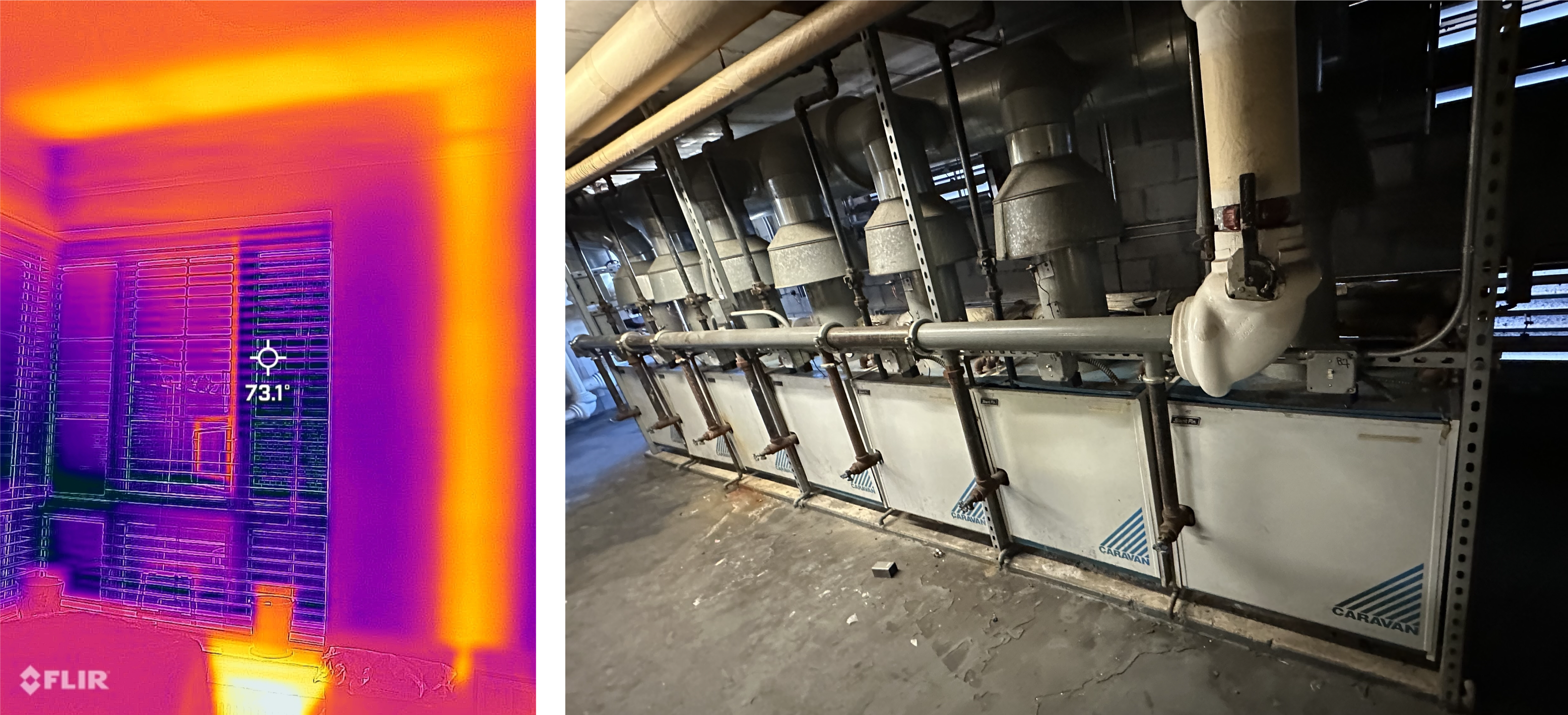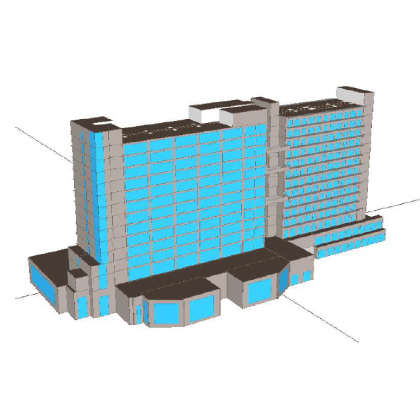ENERGY AND SUSTAINABILITY
“VGCOM is an approved NYSERDA firm under their Multifamily Building Solution Network (MBSN) program”
Energy And Sustainability are meant to improve energy efficiency of a building.
What is Energy Efficiency?
Energy efficiency is to provide less energy to the buildings without compromising the comfort of the residents by implementing energy conservation measures which prevent heat loss. Latest construction and energy codes are pushing new buildings towards energy efficient structures. In fact, retrofit of the existing buildings requires to meet latest MEP codes to minimize energy consumption in the buildings. By implementing energy measures to make building energy efficient is a simple and cost-effective way to fight with the climate change, cost reduction for the building owners, and achieving net-zero emissions of carbon dioxide through decarbonization.
At VGCOM, we provide state-of-the-art energy solutions to various types of buildings to meet several NY City local laws including but not limited to:

Residential Buildings
Similar to fingerprints, each building is different and requires unique solution; similarly, energy savings opportunities in each building are different. At VGCOM, our licensed engineers, certified energy manager (CEM), Certified Building Commissioning Professional (CBCP) and LEED professionals provide unique solutions tailored to each residential building to minimize energy consumptions, and reducing carbon foot-prints. There is always an opportunity to save energy in the buildings and reduce unnecessary costs for energy you don’t need to use.
VGCOM, have been providing services to various multifamily residential buildings’ owners for decades. These multi-family buildings other than the regular buildings include affordable housing (Section 420-c, NYCHA PACT, HDFC Co-Op etc.), ranging from 25,000 ft2 to over a million ft2. Each building, our experts treat uniquely and follow typically the following pathways.
Building Assessment:
We first assess you building envelope, MEP systems, energy bills etc. and provide a survey report or benchmark you building, mostly per LL84/133 requirements and submit to NYCDOB.
Energy Audits for a Residential Building:
What is a Multi-Family Energy Audit?
An energy audit is referred to a process of assessing a multi-family/commercial building’s energy efficiency, and how to improve the efficiency of these buildings by recommending various energy conservation measures (ECMs). Finally summarizing all findings in an energy audit report which include building description, problems with the buildings’ heating and cooling systems and overall building envelope, discussion various ECMs with construction cost & return to investment ratio etc.
The energy report focuses on low-hanging fruits so that the building owners can implement those low-cost/no-cost measures to save significant energy bills. An energy audit report is a thought-out plan, meticulously prepared for your building, which, if followed, will lead you to reduced energy costs and thus carbon foot prints. Every building is different similar to zebra stripes, and each contains different opportunities which can reduce energy usage and that is the reason why every building requires its own audit.
We conduct all energy audits in accordance with BPI (Building Performance Institute) and ASHRAE (American Society of Heating, Refrigerating, and Air-Conditioning Engineers) standards. ASHRAE II and III energy audits comply with New York City Local Laws 87/09 and 97/19, designed to improve the energy efficiency of existing buildings.
An energy audit report includes a description of the building’s existing energy consuming equipment, all energy bills analysis, list of various ECMs which we divide in three categories a) low-cost/no-cost ECMs, payback less than 2 years b) capital projects which require investment to further improve your building efficiency but still have 3-5 years of payback, and c) ECMs which require significant capital investment and payback is over 8 years.an energy balance and most importantly, a presentation of feasible energy conservation measures (ECMs). A typical energy audit report includes:
- Building description including building envelope
- Description of heating/cooling and DHW equipment
- Billing analysis
- Proposed ECM with payback analysis
- Health and safety measures, if any.

Commercial Buildings
Similar to fingerprints, each building is different and requires unique solution; similarly, energy savings opportunities in each building are different. At VGCOM, our licensed engineers, certified energy manager (CEM), Certified Building Commissioning Professional (CBCP) and LEED professionals provide unique solutions tailored to each residential building to minimize energy consumptions, and reducing carbon foot-prints. There is always an opportunity to save energy in the buildings and reduce unnecessary costs for energy you don’t need to use.
VGCOM, have been providing services to various commercial building owners for decades. These buildings range from hotels to large office buildings spanning from 25,000 ft2 to over a million ft2. Each building, our experts treat uniquely and follow typically the following pathways.

Building Assessment: We first assess you building envelope, MEP systems, energy bills etc. and provide a survey report or benchmark you building, mostly per LL84/133 requirements and submit to NYCDOB.
Energy Audits for a Commercial Building:
What is a Commercial Energy Audit?
An energy audit is referred to a process of assessing a commercial building’s energy efficiency, and how to improve the efficiency of these buildings by recommending various energy conservation measures (ECMs). Finally summarizing all findings in an energy audit report which include building description, problems with the buildings’ heating and cooling systems and overall building envelope, discussion various ECMs with construction cost & return to investment ratio etc. The energy report focuses on low-hanging fruits so that the building owners can implement those low-cost/no-cost measures to save significant energy bills. An energy audit report is a thought-out plan, meticulously prepared for your building, which, if followed, will lead you to reduced energy costs and thus carbon foot prints. Every building is different similar to zebra stripes, and each contains different opportunities which can reduce energy usage and that is the reason why every building requires its own audit.
An energy audit report includes a description of the building’s existing energy consuming equipment, all energy bills analysis, list of various ECMs which we divide in three categories a) low-cost/no-cost ECMs, payback less than 2 years b) capital projects which require investment to further improve your building efficiency but still have 3-5 years of payback, and c) ECMs which require significant capital investment and payback is over 8 years.an energy balance and most importantly, a presentation of feasible energy conservation measures (ECMs). A typical energy audit report includes:
- Building description including building envelope
- Description of heating/cooling and DHW equipment
- Billing analysis
- Proposed ECM with payback analysis
- Health and safety measures, if any.
New Constructions
VGCOM offers energy, MEP design, and LEED services for New Construction which has many advantages including environmental, economic, and occupant-oriented performance and health advantages. Starting at the early stage gives an edge to select correct size and capacity equipment which are suitable to a new building need. In particular, LEED certified projects cost less to operate and maintain, are energy- and water-efficient, have higher lease-up rates than conventional buildings in their markets, and contribute to occupant health and productivity.

e-Quest ASHRAE III Modeling
The American Society of Heating, Refrigeration and Air-Conditioning Engineers (ASHRAE) has developed standards and guidelines for performing energy audits on buildings. ASHRAE has three levels of energy audit that varies in details, scope, and accuracy. There are three levels of ASHRAE energy audits:
ASHRAE Level-I Energy Audit
In ASHRAE Level 1 audit, VGCOM engineers focuses on low-cost and no-cost measures and record visible sources of energy losses throughout a building. ASHRAE Level 1 audits are required as a prerequisite to attain LEED-EB status. The walk-through typically focuses on improving lighting efficiencies such as replacing incandescent bulbs with LEDs, weather-stripping around windows and exterior doors, pointing out missing insulation on piping and ductwork, reducing DHW supply temperature, any leaks etc. Typically performing ASHRAE Level I energy audit is enough to come-up with handful of ECMs to lower their bills.
ASHRAE Level-II: Energy Audit and Engineering Analysis
The ASHRAE Level 2 audit is more detailed and entails thorough building survey, deeper ECMs, and requires a quality audit report. ASHRAE Level-II audit includes a more detailed energy calculations complete description of the building including an equipment inventory of major HVAC equipment such as boilers, chillers, DHW heaters, pumps, ERVs, insulation etc. The level II energy audit is required for larger buildings

The Level 2 audit is the most likely type of energy audit for larger buildings where a simple building walk-through cannot capture all energy savings possibilities. The financial analysis at this level of audit is used to build the business case for implementing energy measures.
ASHRAE Level-III: Detailed Survey and Analysis
An ASHRAE Level-III energy typically requires energy analysis software such e-Quest to model a building. This is the most comprehensive and expands on the review and analysis of the building systems and components performed in Level 1 and 2. This audit is further useful to analyze more expensive capital projects. The ECMs recommended through the software analysis are more accurate as the software adjust energy savings caused by one ECM’s effect on the other ECMs, and therefore give a more comprehensive and accurate cost to savings analysis to the owner to make a much informed decisions. VGCOM engineers are expert in eQuest energy software.
